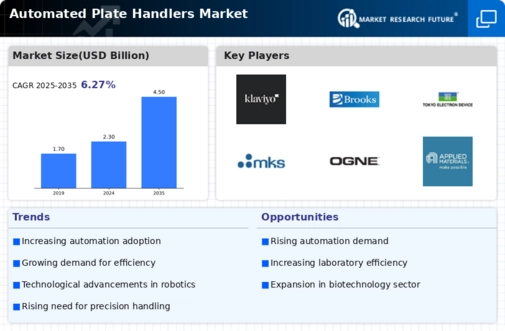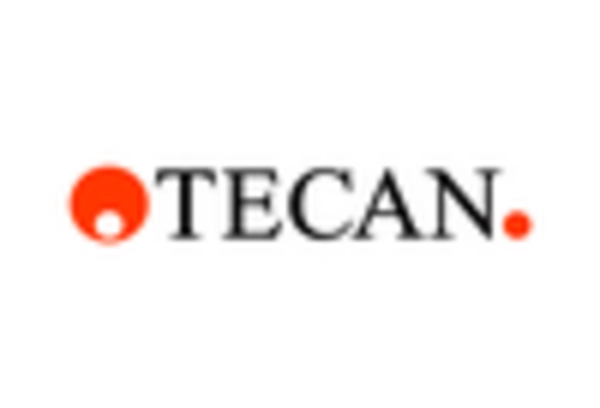Increased Demand for Efficiency
In the current landscape, the Automated Plate Handlers Market is witnessing an increased demand for efficiency across various sectors, including pharmaceuticals and biotechnology. Organizations are under pressure to enhance throughput while minimizing operational costs. Automated plate handlers offer a solution by significantly reducing the time required for sample processing and analysis. Market data indicates that companies utilizing automated systems can achieve up to 50% faster turnaround times compared to manual methods. This efficiency not only accelerates research and development timelines but also improves overall productivity, making automated plate handlers an attractive investment for businesses aiming to stay competitive.
Focus on Data Management and Integration
The emphasis on data management and integration within the Automated Plate Handlers Market is becoming increasingly pronounced. As laboratories generate vast amounts of data, the need for effective data handling solutions is critical. Automated plate handlers are being designed to seamlessly integrate with laboratory information management systems (LIMS), facilitating real-time data capture and analysis. This integration enhances data accuracy and accessibility, which is essential for regulatory compliance and quality assurance. Recent studies suggest that laboratories that implement integrated automated systems can reduce data entry errors by up to 40%, thereby improving the reliability of their results and fostering trust in their processes.
Technological Advancements in Automation
The Automated Plate Handlers Market is experiencing a surge in technological advancements that enhance operational efficiency. Innovations such as artificial intelligence and machine learning are being integrated into automated systems, allowing for improved accuracy and speed in handling plates. These advancements not only streamline processes but also reduce human error, which is crucial in laboratory environments. According to recent data, the adoption of advanced automation technologies is projected to increase productivity by up to 30% in various sectors. As laboratories and manufacturing facilities seek to optimize their workflows, the demand for sophisticated automated plate handlers is likely to rise, driving growth in the market.
Rising Adoption in Research and Development
The Automated Plate Handlers Market is experiencing rising adoption rates in research and development sectors, particularly in life sciences and clinical research. As the complexity of experiments increases, the need for reliable and efficient sample handling becomes paramount. Automated plate handlers provide a consistent and reproducible method for managing samples, which is essential for high-throughput screening and assay development. Market analysis reveals that the demand for automated solutions in R&D is expected to grow at a compound annual growth rate of over 10% in the coming years. This trend indicates a shift towards automation as a standard practice in research environments.
Growing Need for Compliance and Quality Control
The growing need for compliance and quality control within the Automated Plate Handlers Market is driving the adoption of automated solutions. Regulatory bodies impose stringent guidelines on laboratory practices, necessitating accurate and traceable sample handling processes. Automated plate handlers help ensure compliance by providing standardized procedures and detailed documentation of sample processing. This capability is particularly vital in industries such as pharmaceuticals, where adherence to Good Laboratory Practices (GLP) is mandatory. Data suggests that laboratories implementing automated systems can enhance their compliance rates by up to 30%, thereby reducing the risk of regulatory penalties and improving overall operational integrity.

















Leave a Comment